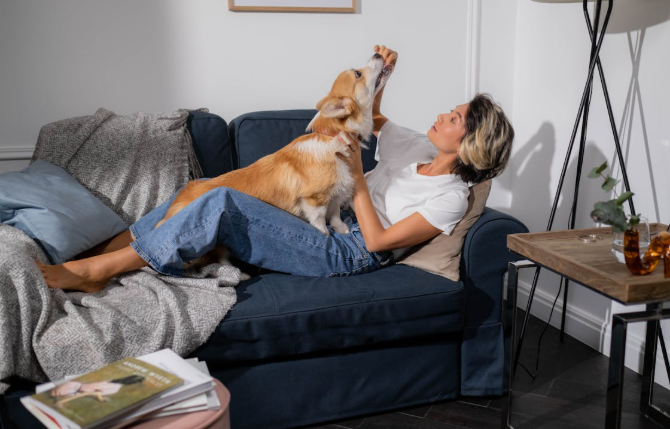What is the Best Primer?
- Matej Svoboda
- Dec 13, 2024
- 4 min read
Updated: Jan 23
Have you ever visited someone’s house and wondered how their walls look so professional and feel so smooth to the touch? Well, the answer is simple, Primer!
Priming is the very first step of your painting process and also the most important one. Just as important as choosing the best paint for your home is, it is also crucial to decide the best primer. But with so many options available in the market, choosing the right kind of primer for the right surface becomes a daunting task. But don’t worry, we’ve got you covered!
In this article, we will walk you through some of the best primers according to the different surface areas. But first, let us answer the most basic question, why need a primer at all?
Why do we need Paint Primer for Walls?
Your wall paint will look better and last longer
Primer will not only help the paint adhere better but the paint will last longer with a vibrant-looking colour throughout its life. This saves time and money in the long run as you will not have to repaint as often. Primers also help in a uniform paint finish and prevent paint finishes from cracking or fading over time.

Makes painting easier and cost-effective
Primers make the paint job much faster and easier by improving the paint’s union with the surface. It also reduces the amount of paint or the number of topcoats needed for a specific job, making it cost-effective.
Protects the wall surface
Primers protect the surface of the material or wall – for example, wood, plaster or MDF can be protected from water absorption by priming their surfaces first. It blocks tannin, grease, water, and smoke stains that can bleed through your topcoat. Primers prevent peeling, cracking, staining, and overall surface warping and generally prevents paint from fading or cracking over time.
Smoother more consistent finish
You can achieve a smoother, more consistent finish when you use a primer before your paint job. This simplifies the task for projects that require accuracy and precision. Many primers come with antistatic properties, where you can touch the painted surface without the feeling of unpleasant static.
What are the best primers according to different surfaces?
The best paint primer for walls depends on the surface you’re painting and also the type of paint you’re using. Read on to find out which is the best primer for your project.
New Plasters
For painting over new plaster, the best kind of priming you can use is a watered-down vinyl matt emulsion. Once the primer is watered down enough, it will seep into the fresh plaster and create a solid bond for the following coats. For this type of project, it is recommended to use a primer made of Fleetwood, Dulux, or Crown vinyl matt watered down to 40%. Check out our complete guide on how you can paint new plaster with total ease.

New Wood or MDF
If your wood is not stained, using an oil-based primer or a high-quality latex primer may be among the best options. If you have wood that's stained or you're painting cedar or redwood, use a stain-blocking primer. Make sure that your primer is compatible with the surface and must not damage it in any way.
Painted Wood
If your painted surface has exposed wood, chalking, or chipped paint, use an oil-based primer. Make sure that before you start priming, you scrape away as much chipped paint as possible, and wash off any chalk.
PVC and Galvanized Steel
Primers are essential while painting metal surfaces as they protect them from rust and corrosion. For this type of surface, water-based primers are the only way as they work best. Some of the common choices for these materials are Zinsser 1-2-3 primer, and Fleetwood Pure Grip primer. Make sure to select the right primer for your paint project by reading the label and checking the base that they are made from.
Water and Smoke Damage
Primers available specially for water or smoke damage, help improve your walls and ceilings from looking dirty and rusty. For water and smoke damage, primers are essential because not only do they cover the surface, but also make it more durable against this type of damage. Primers that work well against smoke and water damage are Blockade (shellac-based), Zinsser Coverstain (oil-based), and Fleetwood Bloxx-it (oil-based).
Wallpapers
It is advised to remove any existing wallpaper before painting over it or trying to cover it up with another wallpaper. If you're preparing walls for wallpaper, then it is recommended to use a mildew-resistant formula that can prime and hide imperfections on the wall to ensure that they would not show under the wallpaper.
If all this information is too overwhelming for you and you need help picking out the best primer for your project, you can get help from the experts at Adam Painters and Decorators. You can rely on us for our expert craftsmanship.

Contact us today and we will discuss your requirements. You can also check the price of the project upfront with our instant online calculator. Let us serve our best to you!
The Final Word
Painting projects can be quite a task, but with the help of the right professionals and the best primer, the process can be made much easier. Primer is not only a good option for residential but also for commercial painting projects. Take your time experimenting with and testing out new primers to see what brings out the best in your paintings. But before you jump into painting, always test a small area first to ensure your primer is the right one for the paints and surfaces!



